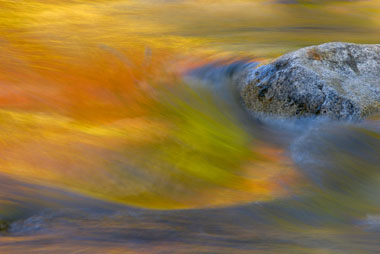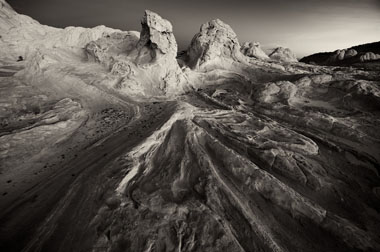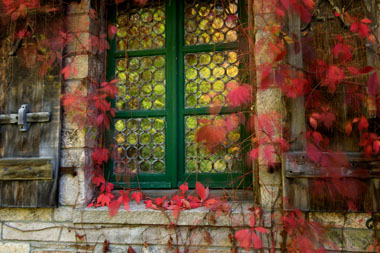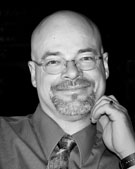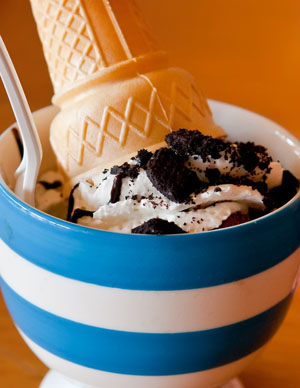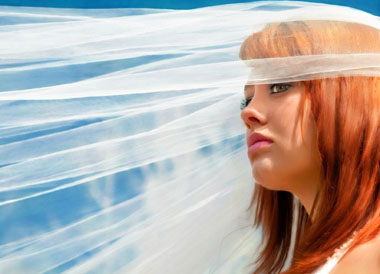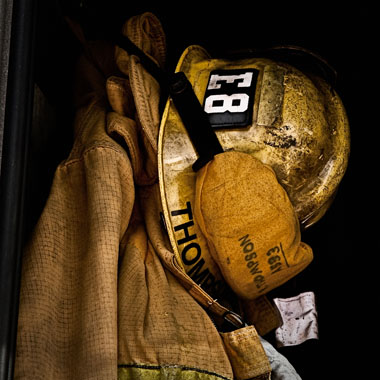Pro Photographers Share Their Most Guarded Digital Secrets
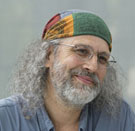
Tony Sweet decided to redirect his creative energies towards nature photography after 20 years of working as a professional jazz artist. His images are published on calendars, post cards, posters, annual reports, greeting cards and catalogs. Tony conducts Visual Artistry photography location workshops and speaks to photography organizations and "Professional Photographers of America" schools throughout the continental United States and Canada. He is a staff writer for Nikon World magazine and has authored four books on the art of photography. Tony has been honored as a "Nikon Legend Behind the Lens" and is represented by The Getty Picture Agency.
Preferred Post-Processing Applications: Aperture for processing and cataloging, also Photoshop CS4.
Favorite plug-in filters/scripts/actions/etc:
Nik Color Efex Pro: Particularly the “Darken/Lighten Center” filter to add depth to the image.
Nik Silver Efex Pro: For black and white conversions.
LucisPro: I use it on every HDR image to enhance detail and add depth.
AlienSkin Snap Art: To add watercolor, oil paint and other artistic effects.
Topaz Adjust: to affect exposure and region on specific images.
What tips can you share with us about working with filters in general? Play often to learn the capabilities of the software. It’s impossible to pre-visualize a filter effect on an image if you are not familiar with the filter. And always place the filter effect on a separate layer and blend it with the original -- this works especially well when you are blending a black and white converted image with the color original. Work in layers, leaving the original untouched. Practice using your software. The more familiar you are with software usage, the more options you have to bring your creativity to fruition.
Favorite Photography Tip: Isolate and simplify the subject.
Do you still shoot with film? No more film for me. I have no need for it.
Where do you print your work? I use an Epson 7900.
Preferred Gear:
Photography: Nikon D3X, 14-24mm, 24-70mm, 70-200mm, 105mm macro, Lensbaby.
Computer: MacBook Pro, 8G RAM, 320GB HD, 4TB external storage, Epson 7900 printer.
To see more of Tony’s work, visit his website.
Mike Sweeney started his visual career by drawing incessantly from the time he was old enough to be trusted with a box of crayons. By the time he was his early twenties he had bought a Canon 35mm camera and was learning the finer points of photography. Now Mike blends his photography skills with his extensive knowledge of technology to produce images that are both classic and state of the art. Mike is an active member is the "Strobist" and other social groups on Flickr, as well as the PPA (Professional Photographers of America), ASMP (American Society of Media Photographers) and NAPP (National Association of Photoshop Professionals). He specializes in wedding photography, portraiture and fine art photography.
Preferred post-processing applications: Adobe Suite CS3 (primarily Photoshop, InDesign) for advanced editing, Lightroom 2 for the majority of workflow management and light editing, PainterX for live media effects, LumaPIX to create albums, calendars, cards etc, VMwareFusion for running Windows XP and LumaPIX, and Fundy SOS album builder which is Photoshop application for creating wedding albums.
Favorite plug-in filters/scripts/actions/etc:
Imagenomic Portraiture: The best and fastest tool I have found for smoothing and evening out skin surfaces and skin tones.
Imagenomic Noiseware: The best noise reduction software.
OnOne Pro Tools: The best overall photo editing tool box on the planet. I especially like the Photo Tools Bleach Bypass and High Pass Sharpening filters.
A Neutral Density Gradient: I use a gradient more than any other processing tool aside from sharpening to dial in localized exposures of sky, water, windows etc.
What tips can you share with us about working with filters in general? Apply any filter effect at the level that you think it should be and then dial it down a notch. Educate yourself about sharpening your images. It’s not as simple as you may think and it can make or break an image. Highpass sharpening is your friend. Learn about using sharpening masking in Lightroom, you will be amazed at the details it can bring out. When you’re sharpening don’t forget to zoom in to 100%. Invest 17 bucks in a monthly pass for kelbytraining.org, some of the best information I’ve seen for Lightroom comes from Matt Kloskowski on kelbytraining.
Favorite Photography Tip: Read the manual for your camera even if you have been shooting for years, you will certainly learn something from it. Be an active member of a few of the many, many photography related boards, there is always something new to see and learn and you never know when you will uncover a piece of priceless information or learn the one thing that will tip a gig your way.
Do you still shoot with film? Yes, Kodak Porta-160VC. I offer it as a custom option for portraits. Some clients like the look of film and will pay a premium for it. And I still shoot Polaroid sometimes because it’s fun.
Where do you print your work? BayPhoto and MPIX
Preferred Gear:
Photography: Nikon D70s, D90, D300, Nikon 17-55mm F/2.8, Nikon 11-24mm F4, Nikon 50mm F1.8, Nikon 17-55mm VR, 4 Nikon SB800 flashes, Nikon SU800, 5 Cybersyncs, Mountainsmith Parallax backpack Flashpoint carbon tripod/head, Westcott collapsible umbrellas, Photoflex Transpack, Z Raygun - a Dual Xenon battery powered light by Brinkmann.
Computer: MacBook Pro 6GB RAM, 250GB drive (Travel), Mac Pro dual quad 10GB RAM, 4TB disk (studio) with a Dell 24-inch Ultrasharp monitor, Canon MP950 all in one printer, Epson 4990 Scanner.To see more of Mike’s work, visit his website.
